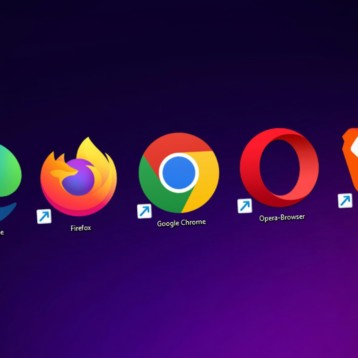
This is an exciting time for the future of web development. The industry is seeing tremendous growth in user accessibility, AI integration, and more, all ultimately serving both the user and developers’ experience.
Here are the primary innovations and trends web developers have to look forward to in 2021.
Increasing Apps’ Accessibility and User-Friendliness
Some of the most significant web development trends emerging in 2021 concern the ease of use and convenience of web applications for both organizations and consumers.
One of the primary forms of this trend is the growing number of progressive web applications (PWA) among internationally acclaimed organizations like Forbes, The Washington Post, and even Starbucks.
PWAs are essentially a “slimmer” version of native applications, in a sense. These provide the best of both worlds in terms of web and native app characteristics. However, they’re much easier and faster to use and share since the user doesn’t have to go through the trouble of a download.
This trend is a double-edged sword. On the one hand, PWAs are much more convenient to the user and more cost-effective for the company. On the other hand, native apps are more thoroughly integrated with the device’s operating system, resulting in a much smoother, more consistent user experience.
Still, past results of implementing a PWA are undeniable:
- Chicago’s Best Western River North Hotel reported a 300% revenue bump and 500% boost in room nights after introducing their PWA
- Pinterest saw a 40% rise in the amount of time spent on their website, 44% revenue growth, and a 60% increase in core engagements
- Vue Storefront reported numerous benefits following the implementation of their PWA, including a 79% spike in revenue resulting from more organic traffic, 77% increase in conversion rate, and 57% reduction in the bounce rate
Similarly, single-page applications (SPAs) are on the rise as well. This is another form of a web application, specifically one for which you don’t need to reload the page during use. The most recognizable examples of this include Gmail and social media sites such as Facebook.
These create a seamless user experience. The user can simply scroll through the website as new content arises while the page remains the same. SPAs also store local data, so users can maintain their site experience (to an extent), even if they temporarily lose reception.
Overall, web applications are making a bit of a comeback and balancing industry reliance on native apps for user services and communication.
The Future of Web Development Broadens Accessibility
Another primary sector driving evolutions in the future of web development is accessibility. Even outside of web site development, the general tech industry has seen massive growth in this area.
More web users than ever before can access services and content belonging to their favorite organizations, despite disabilities or challenges that may have held them back in the past.
One trend within this category is the rise of voice search optimization. As of 2019, approximately 60 million people in the United States have a smart speaker in their household. Further, 54% of Americans have used voice-command technology on these speakers, smartphones, or other compatible devices.
This means that companies have no choice but to optimize their platforms for compatibility with this method of use. There’s also chatter about Google’s recent “Florida” update, saying that pages optimized for voice search may earn higher rankings than those without this specialization.
Many developers have also made very subtle changes to their sites’ UI, prioritizing mobile users’ comfort. For example, think about where all the interactive buttons and menu options lie on your home website. Imagine shifting them down to the bottom third of your page instead of on the top or sides.
This slight change makes it significantly easier for your mobile site visitors to navigate the site, as this is the most comfortable location they can access by moving their thumbs.
Since most people hold their cell phones in one hand during use, this is the best way to improve ergonomics while visiting your site. If your users are more comfortable while surfing through your platform, they may be more inclined to spend more time consuming your content.
Enhancing Content Experience and Site Interaction
Developers are introducing several changes to improve the ease of site interaction and content consumption. In general, the focus lies on speed and minimizing the amount of conscious effort demanded of the user.
For instance, more developers are increasing the integration of AI into their platforms. This profoundly enhances the level of personalization a user can experience, resulting in more relevant content and retail recommendations (which, in turn, serves the company as well).
AI solutions can store an immense amount of user data, such as search and purchase history. With all this information, their web experience will nearly always be specially crafted for them.
This improvement can drastically lower your bounce rate since site visitors always get precisely what they’re looking for, without you having to web scrape for lead generation or similar tasks.
Yet, if the AI is lacking in this area, chatbots are quite popular, too. This trend has proliferated over the last few years and continues to increase. Powered by machine learning algorithms, these can efficiently serve your site visitors or potential customers without having to refer to a human agent.
This could significantly lower your time and financial investment in site operations, helping to improve your cash flow.
Another change that could lessen your bounce rate is Motion UI. This Sass library encompasses things like:
- Animations
- Content transitions
- Motion graphics
As a web developer, you can use the CSS assets available in this library. These small yet significant changes can make your site much more fun to visit and experience, ultimately leading to a happier consumer base and an overall better site performance for you!
Summary
Web developers have some exciting industry trends to look forward to in 2021 and beyond. Many of these are not unique to this year but have been on the rise for some time. These are only just a few things that will be expected in the future of web development.
Still, as the world becomes increasingly reliant on the internet and smart devices due to the rapid global transition to remote living and working, these innovations are more important than ever before.
Fortunately, all these trends benefit both the user and developer. By improving your web platform’s user experience, you generate more traffic and revenue for your organization, expanding your reach to a broader audience.







![10 Top Game Sites Not Blocked By School [2024 Updated]](https://thefutureofthings.com/wp-content/uploads/2024/10/image-25-358x358.png)


